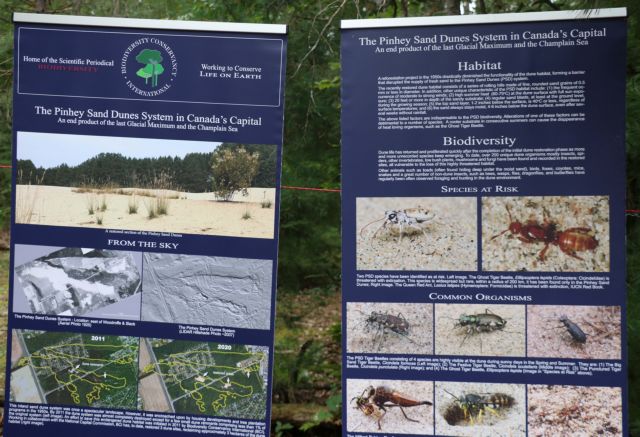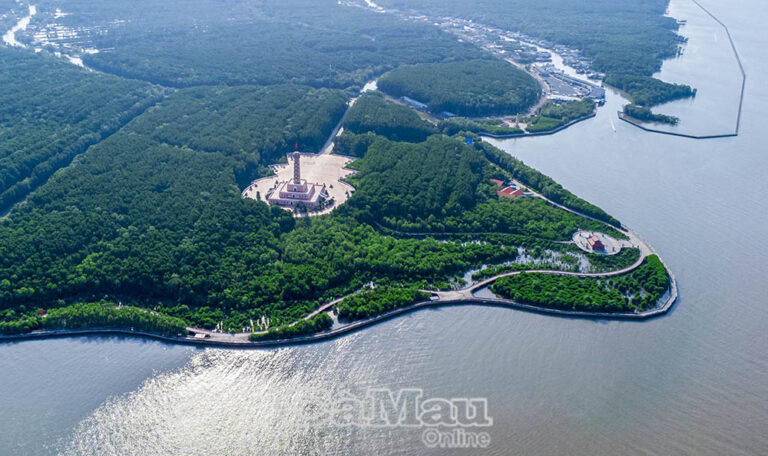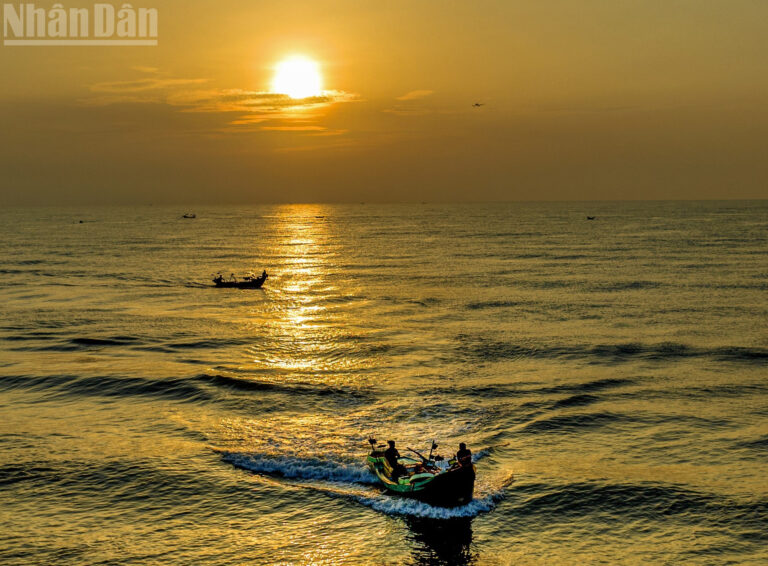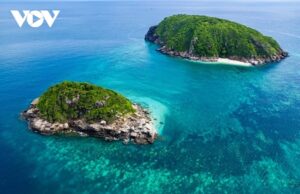A rare, ancient dune in south Ottawa, Canada has been nursed back to life by a Vietnamese scientist, helping flora and flauna thrive again.

Dang Trung Phuoc, second from right, guides visitors at the Pinhey Sand Dunes in south Ottawa, Canada. — VNA/VNS Photo Trung Dung.
The Pinhey Sand Dunes is a by-product of the last Ice Age that has survived for 10,000 years, and was once an abandoned sand pit covered by non-native pine trees, causing habitat degradation.
The site now is an unusual micro-environment and a rare feature of Ottawa's ecology, attracting thousands of people to visit each year.
Home to plants and animal species that can't be found anywhere else in Ottawa, the Pinhey Sand Dunes have been recognised as one of the geological heritage in Canada's capital region.
The results are thanks to a daring project to restore the dunes of Biodiversity Conservancy International, which was co-founded by Vietnamese-Canadian conservatism Dang Trung Phuoc.
In the 1950s, Ottawa City began to plant red pines and other species of trees on the dunes. The authorities also allowed the construction of houses in the area.
Thousands of trees and houses gradually took up more and more space on the dunes. By 2010, over 99 per cent of the sand dunes were covered by trees and houses, threatening plants and insects that could live only in sunny, exposed areas on the dunes.
Many local conservationists raised their concerns over the alarming situation of the dunes and the plants and animal species that depended on the dunes for survival.

Visitors look at photos of endemic species, which can only be found in the Pinhey sand dunes area. — VNA/VNS Photo Thanh Tung.
Phuoc was among those environmentalists. He knew it was time to do something to protect the ecosystem of the sand dunes.
In 2012, Phuoc, chairman of Biodiversity Conservancy International (BCI), proposed a project to restore Ottawa sand dunes to the National Capital Commission (NCC), which took responsibility for the development, urban planning and conservation in the city.
The project, which Phuoc described as daring at that time, intended to chop down several trees.
This would create a better living environment for the remaining plants and animals.
Trails would be built near the dunes using wood chips.
Organic matter such as weeds, dead roots, rotten and decaying wood, leaves, and small-sized organic particles mixed into the dune sand would be removed. Sand sifters would also screen dirty sand to get its natural state.
Phuoc said this was a bold environmental project as it seemed to go against the conventional nature of conservation.
There were challenges in getting the authority's approval, he said.
From the management agencies' perspective, cutting down forests to regenerate a deserted and lifeless land was an act of paradox. Cutting down forests was taboo because forests play an important role in mitigating the effects of climate change.
However, after carefully studying BCI's study about geological and historical value and the unique ecology of the sand dunes, the NCC agreed and approved the project.
The approval of a non-governmental organisation like BCI to carry out a major environmental project on the NCC's greenbelt in the capital is a rarity.

Pictures of the Pinhey sand dune conservation work and endemic species in the area. — VNA/VNS Photo Thanh Tung.
Alexander Stone, who works for NCC, said he was pleased that the sand dunes have been attracting many visitors after the restoration project was co-implemented by NCC and BCI.
Keith Egli, Councilor for Region 9, the city of Ottawa, said that over the past 12 years, he had visited the sand dunes many times.
He emphasised that sand dune restoration is one of the very few projects that has gained the attention of all levels of government and the private sector participating in financial contributions and other resources.
City officials were sceptical about the rationality of this project, but now the project has successfully recreated the system of sand dunes in the heart of the capital, he said.
The project restoring dunes from a highly dense forest is the first of its kind in the city. BCI has called on volunteers to work on the project.
Over one hectare of area, thousands of tonnes of sand must be manually screened to remove organic materials of all sizes from 0.1 to 30 centimetres. To do this, the team designed simple yet highly effective screening devices in the shortest time to do the task.
Phuoc said Viet Nam is one of the five countries that suffer the most negative effects of climate change as the country has a long coastline with a few lowlands such as the Red River Delta and the Mekong Delta River.
The coast in these areas is very flat, and there is no topographic structure to resist seawater intrusion. In contrast, the coastal areas from central Thanh Hoa Province to Ninh Thuan Province often have high and wide coastal dunes systems that are large enough to become natural dykes to cope with rising sea levels effectively.
He said many countries that do not have coastal dunes, such as the Netherlands, have to build very expensive artificial dunes to resist seawater intrusion. Meanwhile, Viet Nam has extremely solid and durable natural dams, which are dunes spread along the coast.
Phuoc stressed the importance of preserving sand dunes in Viet Nam as they would help prevent the intrusion of seawater.
Moreover, the sand dunes are a spectacular geological landscape created by the wind. Unlike the hilly structure, the sand dunes are always in dynamic form as they do not have a definite shape. Sand dunes are invaluable national treasures and must be protected.
In terms of environment, the dune habitat is unique. Only creatures adapted to the unfriendly environment can live on dunes. These are sometimes creatures that can't be found anywhere else.
Phuoc said many dunes in the United States have become well-protected, such as the White Sands National Park in New Mexico. He said Viet Nam could have sand dune national parks protecting the ecosystem, combatting climate change, encouraging scientific research and bringing sustainable tourism development to the country.
















